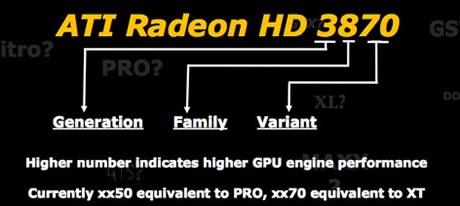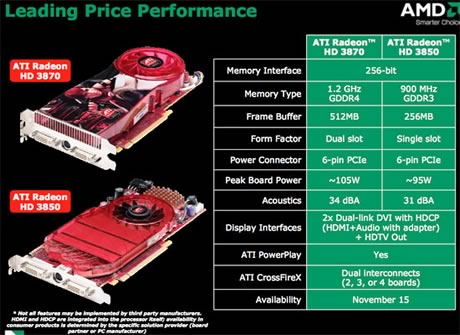1. Introduction
- ATI Radeon HD 3800 series
ATI enters a new era of performance with the arrival of the 3800 series.

The two released products, the 3850 and 3870, are both based on a new GPU, the RV670. There have been several major changes in the architecture of the hardware compared with the previous R600 (2900XT series). What AMD is proud of, is that the RV670 is fabricated on a 55nm TSMC process. That should give an advantage in die size, cost and hopefully clock speeds and power consumption.

Other noticable improvements are the PCI-E v2.0 and DirectX 10.1 new extensions support. AMD has supported video playback performance with a Unified Video Decoder (UVD). The UVD specifications indicate full decode support for both VC-1 and H.264, that should be enough for both Blu-Ray and HD-DVD formats.

Lastly, here is a comparison from AMD of the ATI Radeon HD3870, HD3850 and the previous HD 2900XT series:

You might have noticed that AMD changed the naming theme for the new video graphics cards. You won't again see the XT, LE, PE names that previously confused users. AMD now uses a different coding that can be explained as follows:

AMD explains that the first digit is the product generation, the family follows, while the next two digits refer to the performance within that family. Finally, we can compare both products in terms of performance, features and of course, appearance.

The ATI Radeon HD3850 is a single slot graphics card with a low price, while the HD3870 uses dual slot volume and has an additional 512MB that should give it an advantage in performance. Lastly, with an AMD 790FX based motherboard, you can enjoy Quad-Crossfire setup, called Crossfire-X by AMD.
